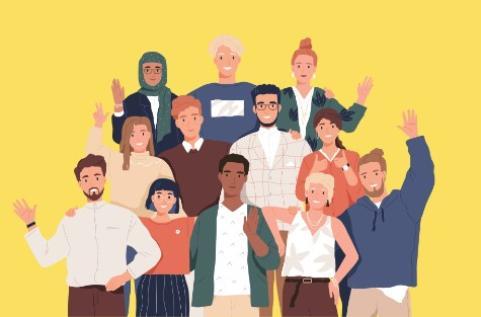It is estimated that 0.5-1.7% of the population have some type of intersex variation— to put this into perspective, approximately 2% of people have green eyes, intersex people are more common than identical twins, there are approximately the same percentage of people with red hair as intersex people and the population of intersex people worldwide is larger than the whole population of Japan.
Intersex Awareness
Support
- AURORA
- Breastfeeding
- Gender Equality
- Mediation
- Embedding EDI: Guidelines for Visibility
- Unconscious Bias Supports
- Athena Swan Institutional Silver Application Consultation - World Café
- Dignity & Respect
- Disability
- LGBTI Supports
- Access to the UCD Community for Refugees & Asylum Seekers
- Mental Health
- Multiculturalism
- Supports for Carers
- Supports for Parents
- Tips for Inclusive Recruitment
- Bereavement Support
- Open Door Initiative
- Quality Review Resources
- Menopause
- Neurodiversity
- Fertility
- Faith and Religion
Intersex Awareness Day, 26 October
“Celebrating Intersex Awareness Day is an opportunity to promote the inclusion of interesex people in our University and in society more broadly. We are marking this day to highlight awareness and recognise intersex people in UCD.“
Dr Niamh Nestor and Associate Professor Paul D’Alton, Chairs of UCD LGBTI Subgroup
What does Intersex mean?
Intersex is an umbrella term used to describe a wide range of innate bodily variations in sex characteristics. Intersex people are born with sex characteristics that do not fit typical definitions for male or female bodies, including sexual anatomy, reproductive organs, hormonal patterns, and/or chromosome patter. This can also be evident in both secondary sex characteristics such as muscle mass, hair distribution and stature.
Intersex characteristics are either female and male at the same time or not quite female or male or neither female or male.
Although intersex characteristics are congenital, intersex bodies can present temselves as intersex at birth, duirng childhood, in puberty or in adulthood. A person may realise being intersex at a very early age or later on in life.
Intersex Awarness Day (IAD) was established to highlight human rights issues that intersex people face. IAD marks the first public demonstration by intersex people in North America, on October 26, 1996. (opens in a new window)Read more about the day’s history from Besty Driver, an early openly intersex elected official in the U.S.
Read this blog on intersex 101 written by an intersex volunteer for ShoutOut: (opens in a new window)Read more.
The Fundamental Rights Situation of Intersex People Report by the European Union Agency for Fundamental Rights summarises some of the key challenges facing intersex people:
- Many Member States legally require births to be certified and registered as either male or female.
- In at least 21 Member States, sex ‘normalising’ surgery is carried out on intersex children.
- Intersex discrimination is better covered by sex discrimination rather than discrimination on the basis of sexual orientation and/or gender identity as it concerns physical (sex) characteristics.
The European Union Agency for Fundamental Rights' report concluded that:
- Legal and medical professionals should be better informed of the fundamental rights of intersex people, particularly children.
- Gender markers in identity documents and birth registries should be reviewed to better protect intersex people.
- Member States should avoid non-consensual ‘sex-normalising’ medical treatments on intersex people.
The Eurpoean Court of Human Rights -‘M’ v. France, No. 42821/18
In 2022 The European Court of Human Rights' decision in M v France could "pave the way for future positive decisions" to “prohibit surgical acts of ‘sexual normalisation’ without medical necessity as well as sterilisations and other treatments carried out on intersex children without their informed consent”. The Court referred to growing concern about “gender normalisation” treatment by Council of Europe, European Union and United Nations bodies, in a 2017 resolution of the Parliamentary Assembly of the Council of Europe.
Sources:
- The Fundamental Rights Situation of Intersex People, European Union Agency for Fundamental Rights: (opens in a new window)Link
- 'M’ v. France, No. 42821/18, ECHR: (opens in a new window)Link
- Human Rights Court Warns Over Treatment of Intersx People, Michael Farrell, Irish Legal News: (opens in a new window)Link
- OII Europe: The Eurpoean Court of Huamn Rights finds the complaint inadmissalbe, but sets the basis ofr the qualification of IGM as torture: (opens in a new window)Link
Want to learn more about being an ally to intersex people? OII Europe: (opens in a new window)How to be a great intersex ally toolkit
UCD LGBTI Subgroup is seeking members from the intersex community to join the group. If you have an interest in supporting greater inclusion of intersex people in UCD’s LGBTI inclusion activities, why not send us an expression of interest:
- (opens in a new window)LGBTIreland
- (opens in a new window)Intersex Ireland
- (opens in a new window)OII Europe Organisation Intersex International Eurpoe
- (opens in a new window)Supporting your intersex child - parent toolkit
- (opens in a new window)How to be a great intersex ally toolkit
- UCD Ten Tips for LGBTI+ Inclusion
- UCD Dignity and Respect Support Service
- UCD LGBTI Supports webpage
- (opens in a new window)Intersexday
